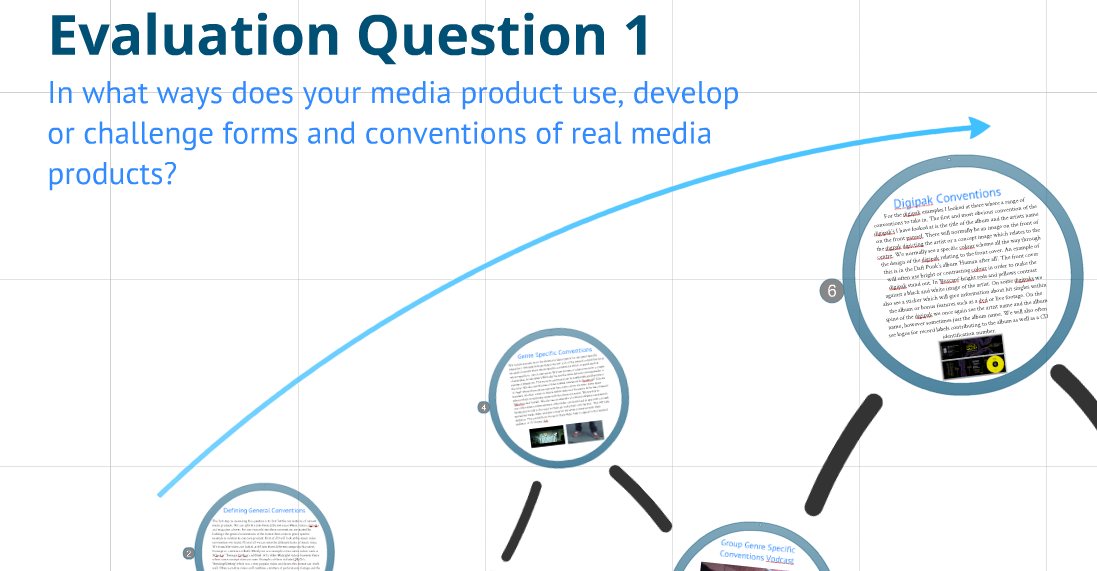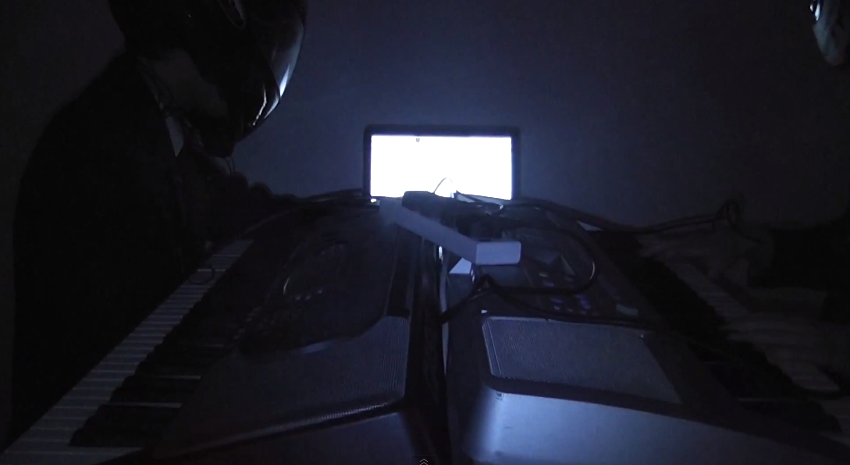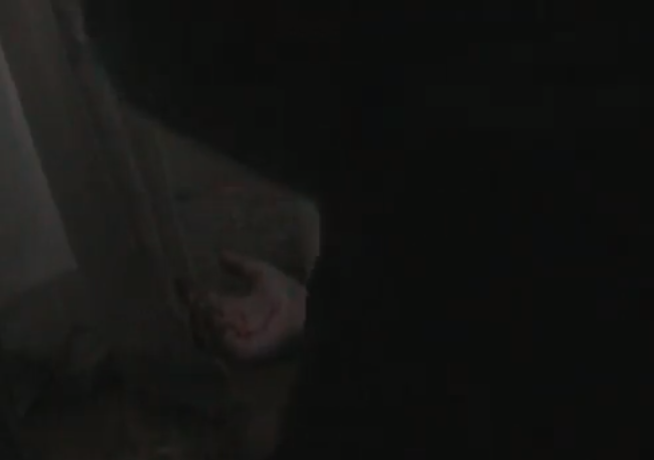How did you use new media technologies in the construction and research, planning and evaluation stages?
Evaluation:
 |
| Prezi |
Next for this evaluation question I am going to go over some of the new media technologies we used in our research and planning.
Blogger:
 |
| Blogger |
- When creating a post itself there are many formatting options within blogger allowing you to change the font and colour of your text which is useful for highlighting certain points or hyperlinks.
- There is also function which allows you to upload pictures as well as video to make your posts more appealing. You can also add captions to these pictures which is especially useful when noting key points in video deconstructions.
- RSS feeds where also used. I used a feed frog the Guardian music blog as well as the Daft Club forum for news on Daft punk.
- I also added polls about music genre and peoples prefered Daft Punk songs. This helped with some preliminary audince feedback.
- I also added a group photo including our names to the side bar.
| Youtube |
Another site we used a lot in our coursework is YouTube. The site allows us to upload video to show to our audience which includes rough cuts, vodcasts and audience feedback. YouTube is good as you can easily embed the videos into blog posts using a code they give you.
- The comments section allows anybody to leave feedback on the video which can be useful however sometimes inappropriate, another way to comment on the video is the rating system leaving a like or a dislike on the video.
- There are also tools in the video manager which allow you to annotate your video pointing the audience to certain features of the video.
- YouTube also allows you to subscribe to related channels or channels from other members in the group.
- Another useful tool is the playlist function which you can ad rough cuts to or other videos which are related to each other.
| Twitter and Facebook |
Two more websites which where important for audience interaction as well as feedback where Facebook and twitter. We used Facebook for organizing shoots and getting people to act in our videos. We also used it for audience feedback on some of the rough cuts by posting our videos YouTube links in group chats and as status updates where people can comment on them. We posted the link to the people who acted in our shoots as well as we thought these people would be able to give better feedback having appeared in the video itself. We set up a twitter for Quack cuts as well in order to give updates on the shoots and the video as well as posting rough cuts. We also looked out for news on Daft punk as we followed their twitter page.
 |
 Cameras:
Cameras: New media technology wasn't just used in sharing our product but also in creating it. The HD cameras we used this year where a big step up from our AS work. These cameras have a much wider angle lens which allows for better video production. These cameras also worked well in low light conditions which was very useful for our video. In lots of scenes where shot in the dark such as the party sequence and performance footage. The cameras in general where very user friendly and gave good image quality.
 |
| High Definition |
 |
| Standard Definition |
The use of SD cards was practical as opposed to using tapes from last year. Another factor to take into account was uploading footage. Using Final Cut Pro X to upload then edit our footage was much easier than last year where we had to use multiple programs to process footage before it could be edited. In the research and planning we used the Cameras and final cut in making vodcasts as well as filming audience feedback.
Final Cut was also useful for uploading podcasts. We would use the Photo Booth program on Mac to record the podcast then import straight into final cut where it would give us the option to export the file as an mp3. For uploading and embedding this file we used Divshare. A free website which allows you to upload audio clips which we could then embed into posts on the blog. We also used Scribd in order to embed word documents or sheets to show evidence of our organisation and planning.
Tools In Production:
 |
| Photoshop CS6 |
| After Effects CS6 |
Final Cut:
 |
| Final Cut Pro - Group Video |
A big advantage of Final Cut Pro X is the lack of render times, this meant we could edit footage and playback in real time full in full screen. This allowed us to gain immediate feedback which we could then take into account when editing the video further. Due to the improved video quality the HD cameras gave us we could pan and zoom footage without losing too much of the quality. Render times when exporting a video in Final Cut Pro X where also much quicker. We could export and upload the video which we could then show to people to gain feedback on.
okay, you're doubling up to a degree with the post text, but still doesn't excuse the awful presentation again
ReplyDeletebreak it up, add clear sub-headings, add more screenshots + links
if you can engage with web 2,0 theories espec, do so above the vid so this isn't lost
i'd always bold any terms used
good points on cams - crying out for screenshots/cliups of both as and a2 to compare
ReplyDelete